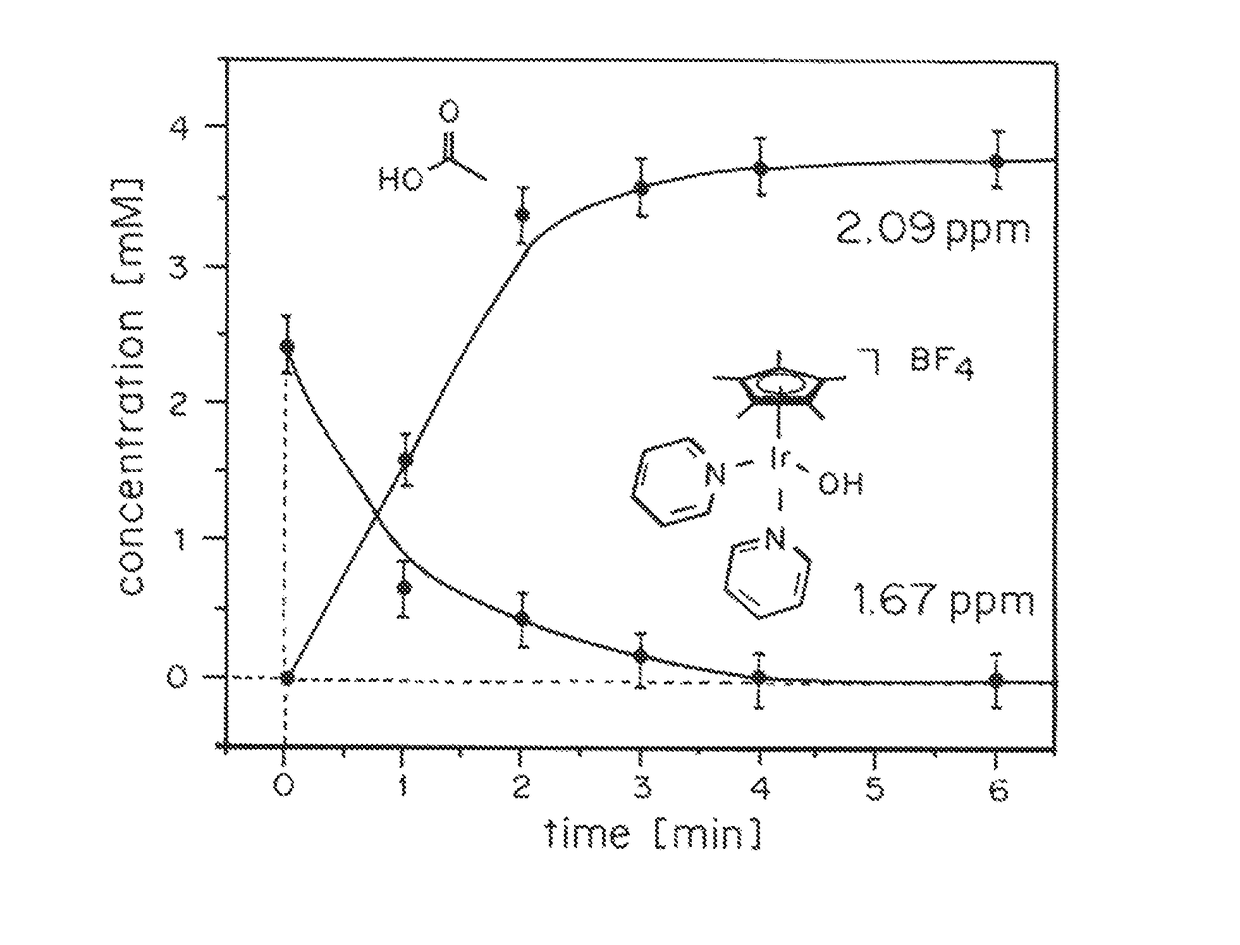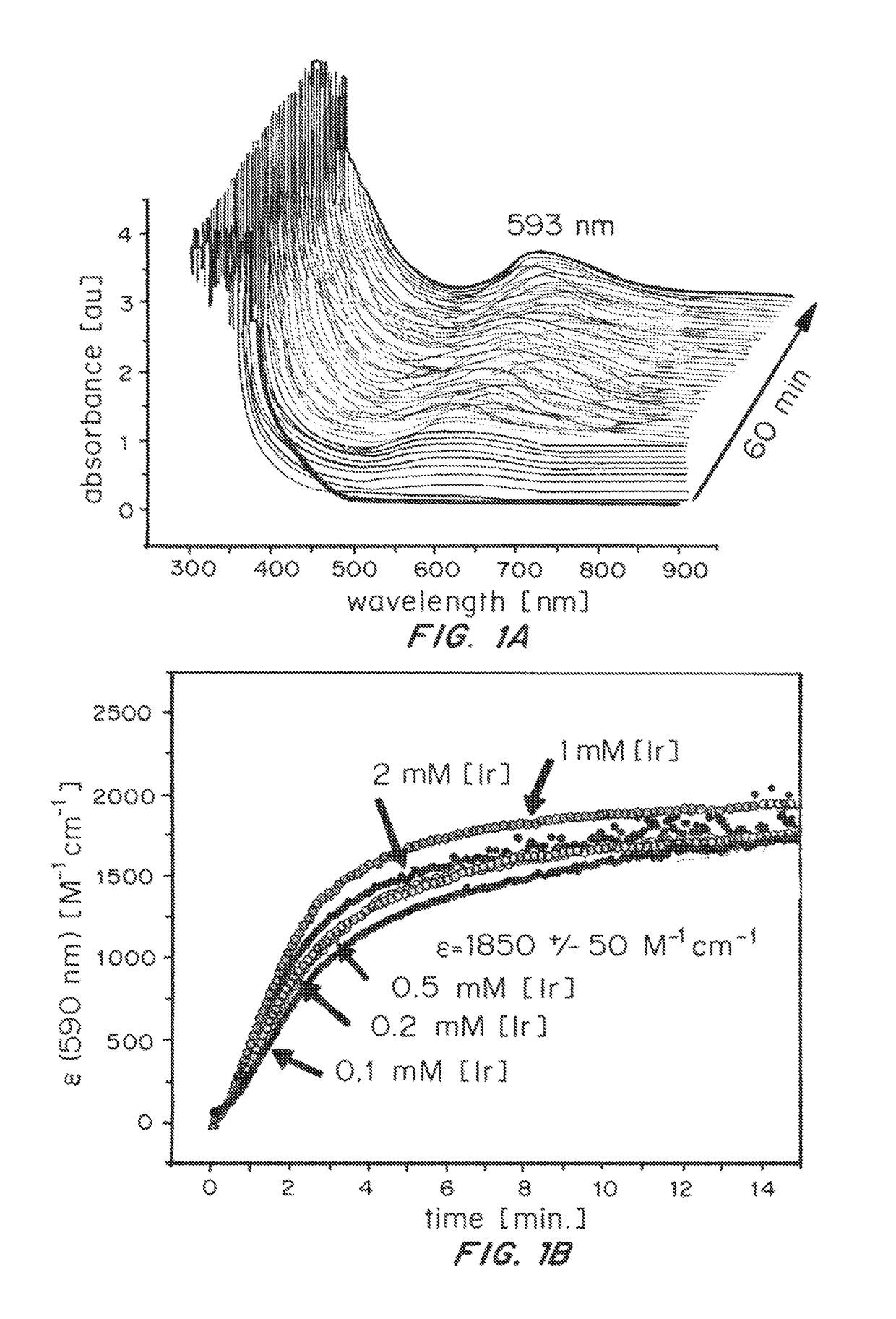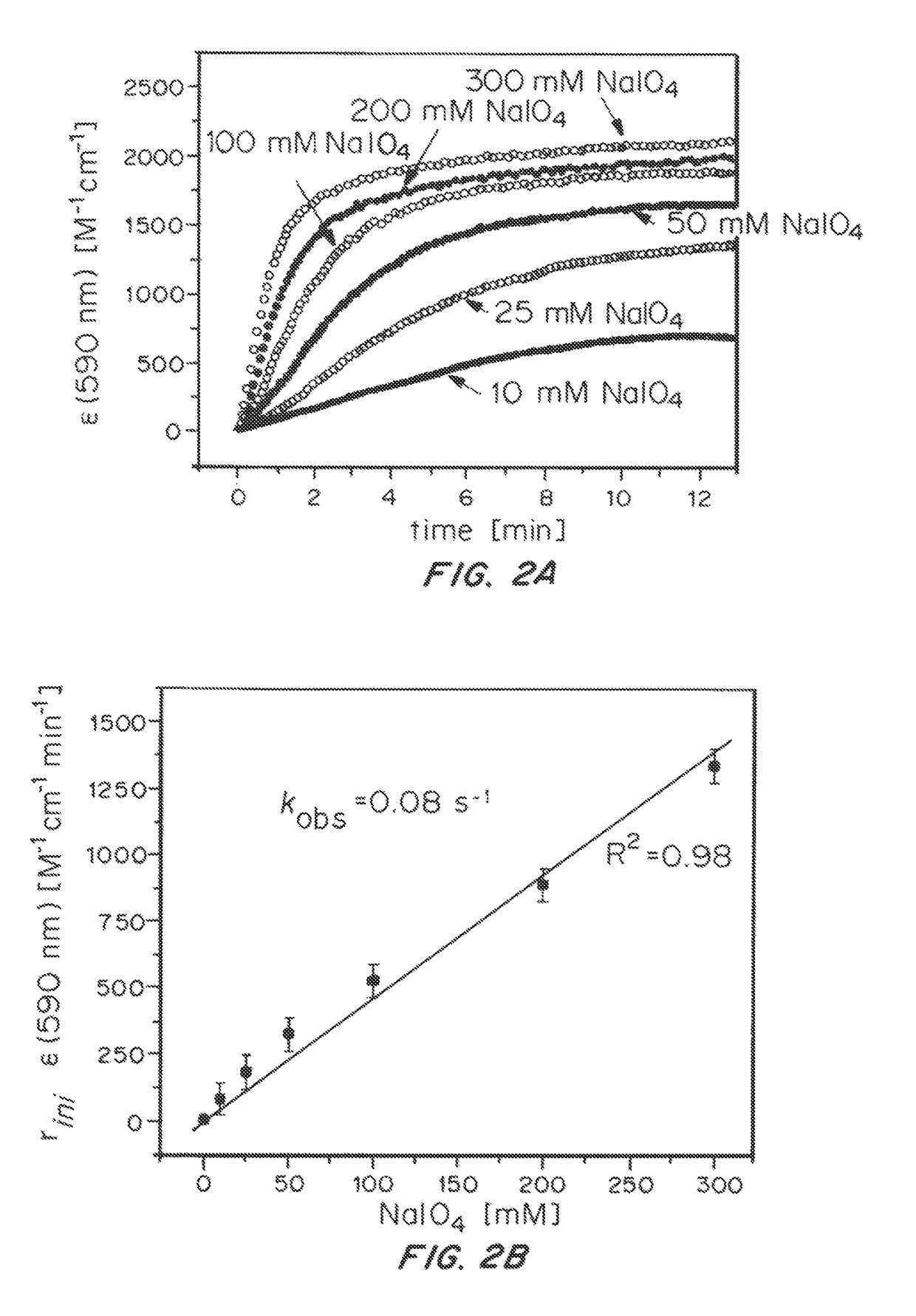Iridium complexes for electrocatalysis
a technology of iridium complexes and complexes, applied in the field of iridium complexes, can solve the problems of high sustained current concomitan
- Summary
- Abstract
- Description
- Claims
- Application Information
AI Technical Summary
Benefits of technology
Problems solved by technology
Method used
Image
Examples
example 2
of Cp* Removal and Formation of Active Catalytic Species
[0124]In order to test how the Cp* ligand is oxidatively removed from the IrIII precursor, the coordinatively saturated sandwich complex [Cp*Ir(tacn)]SO4 (2, tacn=1,3,5-triazacyclononane) was prepared and treated with excess NaIO4 in H2O (Scheme 2).
[0125]
[0126]In this case, the 1H-NMR and UV-Vis spectra of the complex remained entirely unchanged, and no O2 evolution was detectable by Clark-type electrode. The complete inertness of 2 towards oxidation demonstrates that neither direct oxidant attack on the coordinated Cp* ligand or outer-sphere electron transfer from the IrIII to the oxidant appears to occur, and oxidative transformation of Cp*IrIII complexes thus occurs within the coordination sphere of the metal, requiring at least one open site to proceed.
[0127]While [Cp*Ir(bipy)X]+ complexes with various hydrolysable X ligands in the open site readily react with aqueous periodate, no reaction occurred between [Cp*Ir(bipy)Cl]B...
example 5
eous Catalysts
[0157]Working Electrodes
[0158]Working electrodes for electrochemical characterization were constructed by spin-coating (Headway PWM32 Spin Coater, Headway Research Inc.) at 1000 rpm on 2.2 mm thick glass slides coated with 500 nm of fluorine-doped tin oxide (FTO, TEC 7, Hartford Glass Co. Inc.) for 30 seconds.
[0159]NanoITO (Sigma Aldrich, <50 nm particle size) was added to a mortar and pestle and ground for 10 minutes with glacial acetic acid. Ethanol was added to make a 5 M acetic acid / ethanol mixture, which was then sonicated for 10 minutes. A spin rate of 1000 rpm was used and the amount of nanoITO in the 5 M acetic acid / ethanol mixture as varied between 5 wt % and 30 wt % resulted in films having a thickness of between approximately 300 nm and 7 μm as measured by a profilometer after sintering (KLA Tencor Alphastep 200). Greater thicknesses were achieved by successive spin coating of additional layers beyond the first, heating the particles on a hot plate to 200° C...
PUM
| Property | Measurement | Unit |
|---|---|---|
| pH | aaaaa | aaaaa |
| Faradaic efficiency | aaaaa | aaaaa |
| Faradaic efficiency | aaaaa | aaaaa |
Abstract
Description
Claims
Application Information
 Login to View More
Login to View More - R&D
- Intellectual Property
- Life Sciences
- Materials
- Tech Scout
- Unparalleled Data Quality
- Higher Quality Content
- 60% Fewer Hallucinations
Browse by: Latest US Patents, China's latest patents, Technical Efficacy Thesaurus, Application Domain, Technology Topic, Popular Technical Reports.
© 2025 PatSnap. All rights reserved.Legal|Privacy policy|Modern Slavery Act Transparency Statement|Sitemap|About US| Contact US: help@patsnap.com



